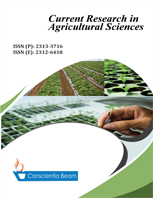Cultivation practices of leafy vegetable production during the wet season in Ambon, Indonesia
DOI:
https://doi.org/10.18488/cras.v10i2.3583Abstract
Green cabbage, water spinach, and spinach are important vegetables in the diet of the Ambonese communities, so the vegetables have economic value and contribute to the inflation of Ambon City. The main obstacle for optimizing leafy vegetables in urban farming of Ambon City in Ambon Bay neighborhood is excess water during the rainy season which possibly induces plant diseases and reduces the yield. The purpose of this study was to verify the 11-year weather of Ambon Bay; and the adaptation of vegetable farmers in Ambon City to the change of rainy season as well as precipitation in the study location The research was conducted using a qualitative descriptive method based on interviews with farmers supported by climate data for 11 years. This study explains that the rainfall was variable during 10 years; In 2010-2013 and 2017-2020, the annual rainfall was 3.950-5.264, while in 2014-2016 it ranged from 2.017-2.995 mm. Farmers adapt to high rainfall by installing plastic rain shelters, shortening the planting distance from 20 cm to 10 cm, and changing the planting calendar. However, in general growers install rain shelters during vegetable cultivation in the wet season resulting in high productivity of leafy vegetables.

